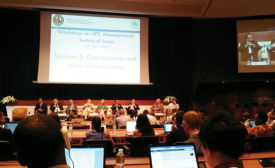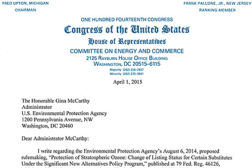Home » refrigeration systems
Articles Tagged with ''refrigeration systems''
RDL program aims to ensure sound, safe management of refrigerants
Read More
Refrigerant Supply Shortfall to Hit in Three Years
European manufacturers predict decreasing quotas will create a shortfall prior to 2020
Read More
Nations Deliberate Montreal Protocol
Paris, Dubai meetings set the table for a potential global revision in 2015
Read More
Hidden Heroes Reside Inside HVACR Equipment
Component manufacturers provide consistent quality amidst constant change
Read More
EPA Issues Final Rule on HFCs
As expected, R-404A, -407A, -410A, -507A, many others targeted
July 2, 2015
Webinar Explores Servicing CO2 Refrigeration Systems
Part of the ‘Making Sense’ series from Emerson Climate Technologies
June 29, 2015
Sherwood Introduces New Superior HVACR Valve Website
Site provides expanded product information, photos, and resources
June 15, 2015
Congressman Questions the EPA about HFCs
US Representative Voices Concerns About Proposed Restrictions
Read More
Copyright ©2024. All Rights Reserved BNP Media.
Design, CMS, Hosting & Web Development :: ePublishing








